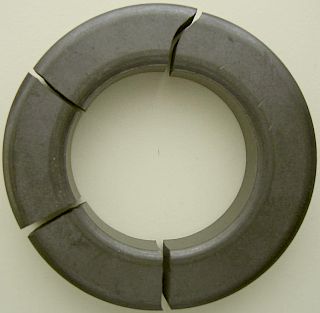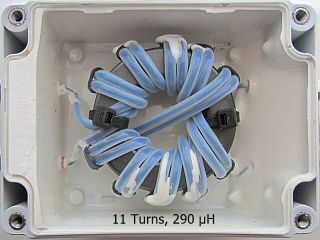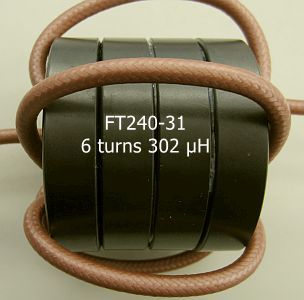.gif)
BALUN FOR ASYMMETRIC ANTENNA TUNERS LINKED TO
A SYMMETRIC ANTENNA OF ANY SIZE
INTRODUCTION
.gif)
Various methods are used or recommended to connect an asymmetrical antenna tuner to a symmetrical antenna system. In commercial and DIY antenna tuners (ATUs), toroids are usually used as a current balun or voltage balun. The composition of the ferrite often remains unknown, so that the toroidal core becomes hot or eventually cracks when a lot of power is supplied. If one works with only 100 W or less, these disadvantages will not be experienced.
As an example, a T-match ATU has been used here, a system that is present in the shack of many radio amateurs.
It will be clear that the proposed balun can also be used with other asymmetric tuners such as LC, 2LC, 2CL, etc.
EXPERIMENTS
Around 1972 I gained my first experience with toroidal cores (T200-2), which Joep PA0JM (SK) brought me from the USA, he was at the time an board technician for a major airline and then an importer for YAESU.
At that time the well-known green ring cores (4C6?) were in circulation. Later, other types of toroids became available through flea markets or dump dealers, but generally the composition or mix was unknown. Nevertheless, they were bought to get started for experimenting.
Unfortunately, the advice of some ferrite experts was also incorrect, as a certain large toroidal core was claimed to be rated for 800 W. When tested at that power, it exploded within a minute!
 Exploded within a minute with 800 W. |
A selection of ferrite cores obtained over the years that was worked or experimented with. Most of unknown composition. |
FT240-31
 Commerciële balun tusen ATU en open lijn. |
More types of ferrite cores are now available, also in the Netherlands (ferrite-shop.nl), allowing further experimentation.
We PD0EEA and PA0FRI found that a mix31 or mix77 was best used as a current balun or transmission line transformer between an asymmetrical ATU and a symmetrical antenna of any size.
Others also came to the same conclusion and after examining a commercial current balun that is offered as such, it turned out that with 11 turns the self-inductance was 290 µH. According to Amidon's data, the composition should be something between mix31 and mix77, so given the format types FT240-31 or FT240-77. The seller may have supplied a special FT240-?? toroidal core ordered. The balun would be suitable for 1.2 kW PEP SSB and 300 W CW.
.jpg)
Because FT240-31 is widely available and the difference with FT240-77 is not significantly large, all our attention was focused on the first type.
For a current balun between an asymmetric ATU and a symmetrical antenna of any size, an inductance of about 300 µH is a good compromise for a range of 1800 kHz - 30 MHz.
Ideal is about 200 µH for 14 MHz - 30 MHz and about 300 µH for 1.8 MHz - 14 MHz.
.gif)
An FT240-31 is suitable for 400 W. Under favorable conditions I tested it with 800 W, but it is better to keep it at 400 W. With 13 turns the self-inductance becomes 308 µH and with 11 turns 220 µH.
The diagram shows the system. The balun can also be built into an existing ATU or replace the original toroidal core.

If multiple cores are stacked, fewer windings are required, the transmission power can be increased and the influence of the windings on each other decreases.
The cores can be wound with coaxial cable or with two wires in parallel as long as they are insulated with good insulation such as PTFE.
Theoretically it is better with two wires and my testing shows that with coaxial cable some imbalance is caused.
In practice you will hardly notice it, but my preference is for winding with two wires in parallel (bifilar windings).
If one assumes that 1 × FT240-31 can handle 400 W, then a stack of 4 × FT240-31 will be rated for 1.5 kW.
